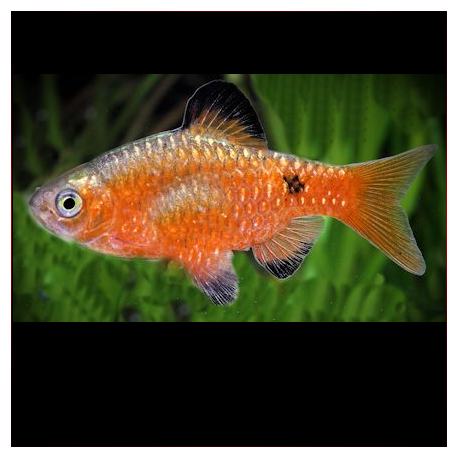More info
Datasheet
| Minimum Tank Size | 90 litres / 23.78 US gallons |
| Maximum Size | 7.5cm / 2.95inches - 10.0cm / 3.94inches |
| Temperature | 16°C / 60.80°F - 24°C / 75.20°F |
| Hardness | 5.04dgH / 90ppm - 20.00dgH / 357ppm |
| pH | 6.0-8.0 |
General Description
The Rosy Barb, scientifically known as Pethia Conchonius, is a hardy and peaceful small cyprinid species frequently favored by beginner aquarists in the hobby. Selective breeding has resulted in various ornamental strains, such as long-finned and brightly colored variations. This species is typically found in community aquariums due to its adaptable nature and compatibility with a wide range of tank mates.
Aquarium Setup
The Rosy Barb thrives in a well-planted aquarium with a dark substrate, where it displays enhanced coloration. The addition of floating plants and driftwood can provide hiding spots and create a more natural environment. While filtration need not be overly strong, a gentle water flow resembling its natural habitat is appreciated. Water conditions should ideally maintain a pH range of 6.0-8.0, hardness between 90-357ppm, and a temperature of 16-24°C.
Behaviour
This species exhibits a peaceful demeanor, making it an ideal addition to community tanks. Its schooling nature suggests keeping it in groups of 8-10 individuals, which reduces stress and enhances the visual appeal of the aquarium. In larger groups, male Rosy Barbs display vibrant colors while competing for female attention.
Feeding and Diet
Being a generalist omnivore, the Rosy Barb consumes worms, small invertebrates, plant matter, and organic detritus in the wild. In captivity, a diet consisting of live and frozen foods like bloodworms, Daphnia, and Artemia, alongside quality dried flakes with plant content, ensures optimal health and coloration.
Reproduction & Dimorphism
Rosy Barbs are egg-scattering spawners without parental care. To encourage breeding, setting up a separate, dimly lit tank with suitable spawning substrates, such as mesh or fine-leaved plants, is recommended. Adult males are smaller, more colorful, and develop tubercles during the spawning season, contrasting with the females' larger size and subdued coloration.
Habitat and Distribution
Native to regions ranging from Pakistan to Bangladesh, the Rosy Barb inhabits diverse habitats like streams, rivers, lakes, and ponds. Wild-caught specimens are rare in the aquarium trade, with most individuals commercially bred today. Feral populations are established in countries like Singapore, Australia, Mexico, Puerto Rico, and Colombia.

